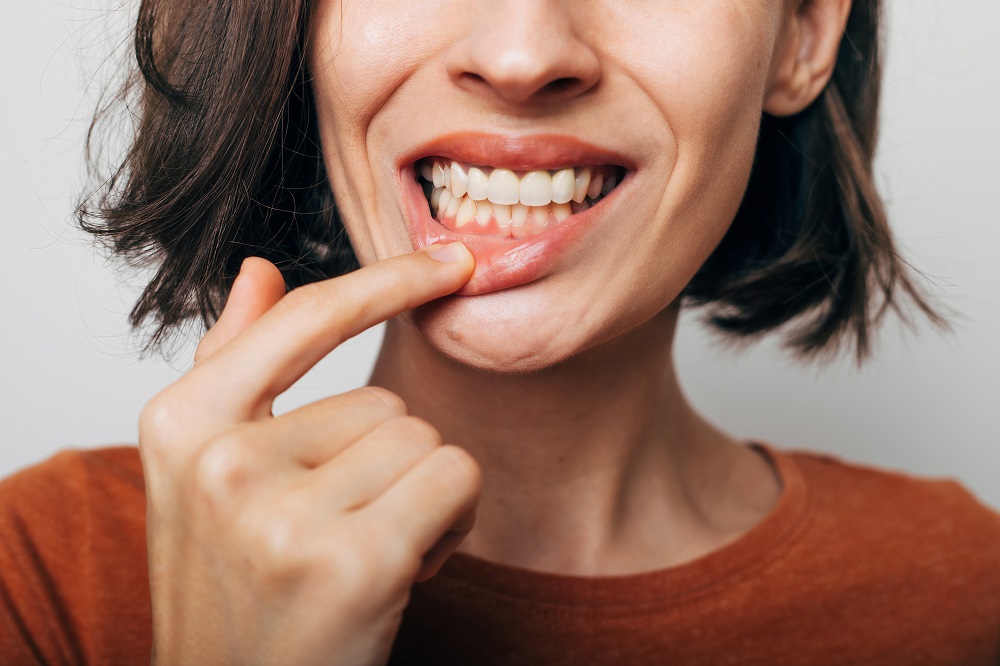Gum grafting procedures can help restore gum tissue and prevent further dental problems. Learn about the different types to find the right one for you.
What is a Gum Graft and Why Are They Necessary?
Gum grafting is a procedure to restore areas of the mouth that have experienced higher levels of gum recession. This is when the gum tissues surrounding teeth pull away. When the gumline recedes, this exposes more of the tooth and its root, which creates more chances for bacteria to cause infection.
It often goes unnoticed until it becomes more severe because of its gradual development over time. If you are predisposed to gum-related issues or notice recession in your gum line, it’s important to contact a dentist near you to see if you are at risk for periodontal disease. There are a number of reasons why you could be:
| Periodontal Disease | Infection from gum disease is the leading cause. |
| Genetics | Higher susceptibility to gum disease than others. |
| Brushing Too Hard | Regular aggressive brushing can eat away at enamel and gums. |
| Poor Oral Hygiene | Makes it easier for sticky plaque to turn into hard tartar. |
| Hormonal Changes | Puberty, pregnancy and menopause can make gums more vulnerable. |
| Grinding/Clenching | Too much force on the teeth can cause recession. |
| Smoking | Tobacco and cannabis use can cause plaque and tartar build-up. |
| Crooked Teeth / Misaligned Bite | Uneven force on teeth can cause recession. |
| Piercings | Jewelry can rub against the gums, irritating them and causing recession. |
What Types of Gum Grafts Are There?
The type of gum graft depends on the graft material used and the location in the mouth where the graft material was pulled from. Our dental clinic in the Red Deer area provides gum grafting near you and will help determine the best treatment for you
1. Connective Tissue Graft
This is the main method used for gum grafts that specifically treat exposed roots of teeth. A type of gum tissue called a connective gum tissue is used as a graft. It is retrieved from the inside of the palate (roof of the mouth).
2. Free Gingival Graft
This method is similar to the connective-tissue graft, where the graft is retrieved from the roof of the mouth. Instead of using tissue from inside the palate, the graft is pulled from the surface of the palate. This method is reserved for people who already have thin gums and need more for enlargement.
3. Pedicle Graft
If a patient has an abundance of gum tissue, this method may be selected. The graft is created from gum tissue not far from the area that requires grafting. Three incisions are made, and that ‘flap’ of gum tissue is stretched over the grafting area like a blanket.
4. Alternative Grafts
Graft material doesn’t necessarily have to come from a patient’s own mouth. There are tissue banks that dentists can access, as well as tissue-stimulating proteins to promote healing.
What to Expect During Gum Graft Surgery
Gum grafting surgery is usually done by a periodontist (a gum specialist). You’ll likely get a referral from our Red Deer area dentist to find the gum contouring & grafting specialist near you. The surgery takes about one hour for one graft and then longer for multiple grafts.
The procedure occurs in five steps:
1. Anesthesia – Teeth and gums are numbed; full sedation can likely be arranged.
2. Site Preparation – The area to receive the graft is cleaned and prepared.
3. Graft Harvest – For example, if this is a connective tissue graft, a small wedge of connective gum tissue is retrieved from inside the patient’s palate.
4. Graft Placement – Continuing with the example, the harvested wedge is placed over the prepared site.
5. Suturing – The periodontist positions the gum tissue and then it is attached.
When all is done, the patient receives gauze and dressing, is monitored for a bit and likely prescribed recovery medication.
Post-surgery
| Timeline | Events | Instructions |
| Day 1 | Bleeding, swelling, discomfort | Take it east, get some rest. |
| Week 1 | Bleeding subsides by about the end of day 2, bruising may occur. | Have soft foods (ex: eggs, pasta). Do NOT brush or floss near the grafted area. |
| Week 2 | Swelling and bruising begins to fade, comfort levels improve, the surgeon may approve a decrease in medication dosage. | Solid foods are welcome but watch out for crunchy and spicy foods. |
Call your dentist if you experience any unusual symptoms following surgery, including:
- Bleeding that won’t stop after applying pressure for 20 minutes.
- More pain, swelling, and bruising than your dentist said to expect.
The final stage occurs when the periodontist gives you the green light to resume regular brushing and flossing. Not only will you feel better about your oral health, you’ll also be excited to show that smile.
If you are looking for a dental practice that specializes in gum contouring & grafting near you area or you’re looking for a good family dentist in Red Deer area, contact us now for more information and to book your appointment!

